Intel Xeon Gold 6226R Benchmarks
For this exercise, we are using our legacy Linux-Bench scripts which help us see cross-platform “least common denominator” results we have been using for years as well as several results from our updated Linux-Bench2 scripts. Starting with our 2nd Generation Intel Xeon Scalable benchmarks, we are adding a number of our workload testing features to the mix as the next evolution of our platform.
At this point, our benchmarking sessions take days to run and we are generating well over a thousand data points. We are also running workloads for software companies that want to see how their software works on the latest hardware. As a result, this is a small sample of the data we are collecting and can share publicly. Our position is always that we are happy to provide some free data but we also have services to let companies run their own workloads in our lab, such as with our DemoEval service. What we do provide is an extremely controlled environment where we know every step is exactly the same and each run is done in a real-world data center, not a test bench.
We are going to show off a few results, and highlight a number of interesting data points in this article.
Python Linux 4.4.2 Kernel Compile Benchmark
This is one of the most requested benchmarks for STH over the past few years. The task was simple, we have a standard configuration file, the Linux 4.4.2 kernel from kernel.org, and make the standard auto-generated configuration utilizing every thread in the system. We are expressing results in terms of compiles per hour to make the results easier to read:
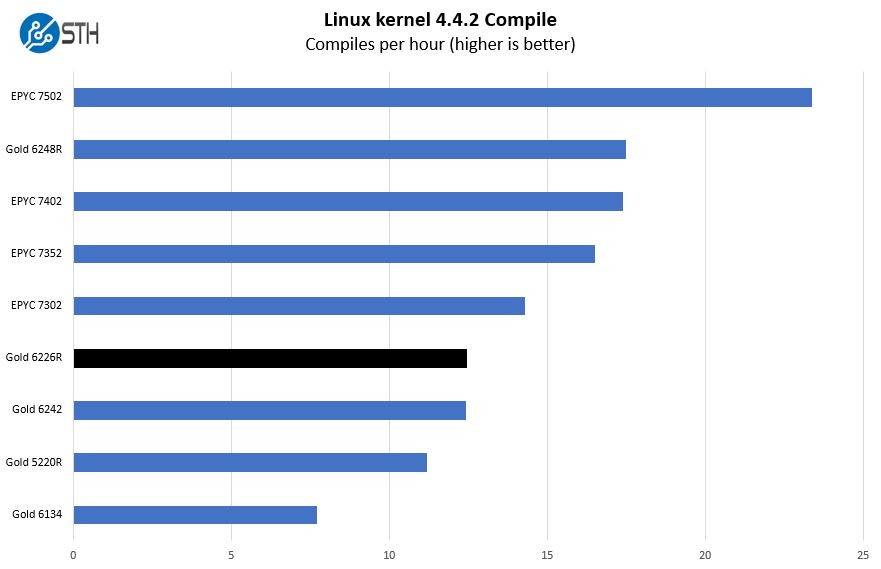
We have a fairly interesting set of CPUs in this review for comparison. This is an example of a great chart where the 16-core Intel Xeon Gold 6226R actually out-performs a 24-core Xeon Gold 5220R largely because of clock speed differences. As you will see in other parts of this review, that is not always the case. Still, it shows the power of these frequency optimized SKUs in a very stark example.
c-ray 1.1 Performance
We have been using c-ray for our performance testing for years now. It is a ray tracing benchmark that is extremely popular to show differences in processors under multi-threaded workloads. We are going to use our 8K results which work well at this end of the performance spectrum.
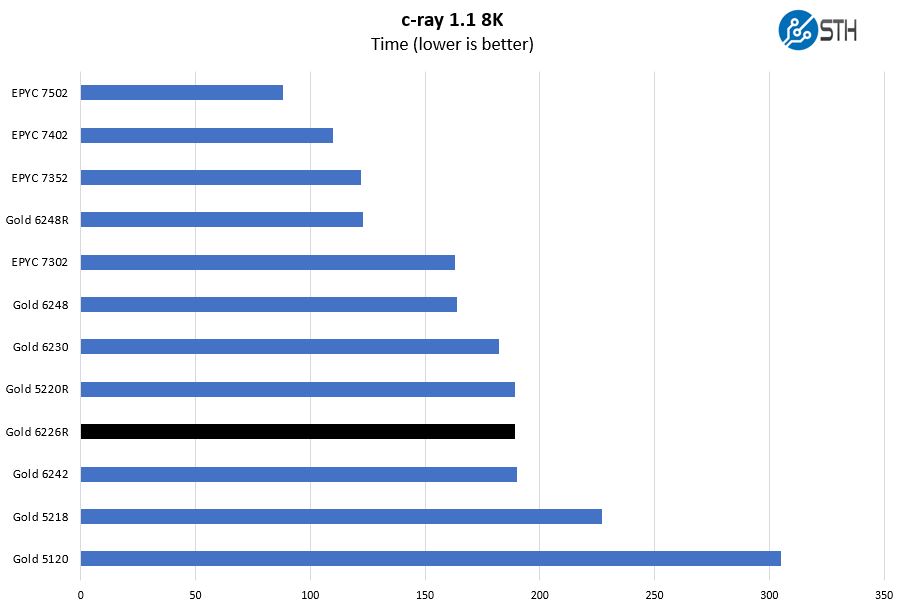
This test tends to highly favor the AMD core and cache hierarchy. That is one reason, for example, that AMD tends to use benchmarks such as Cinebench on the workstation marketing side. When we again look to the Intel Xeon Gold 5220R comparison, we see that the Gold 5220R which has lower frequency, but 50% more cores slightly out-performs the 16-core Gold 6226R. Although the Gold 5220R is slightly more expensive from a CPU list price perspective, the biggest impact will be the licensing costs where having these lower-speed cores do not help.
7-zip Compression Performance
7-zip is a widely used compression/ decompression program that works cross-platform. We started using the program during our early days with Windows testing. It is now part of Linux-Bench.
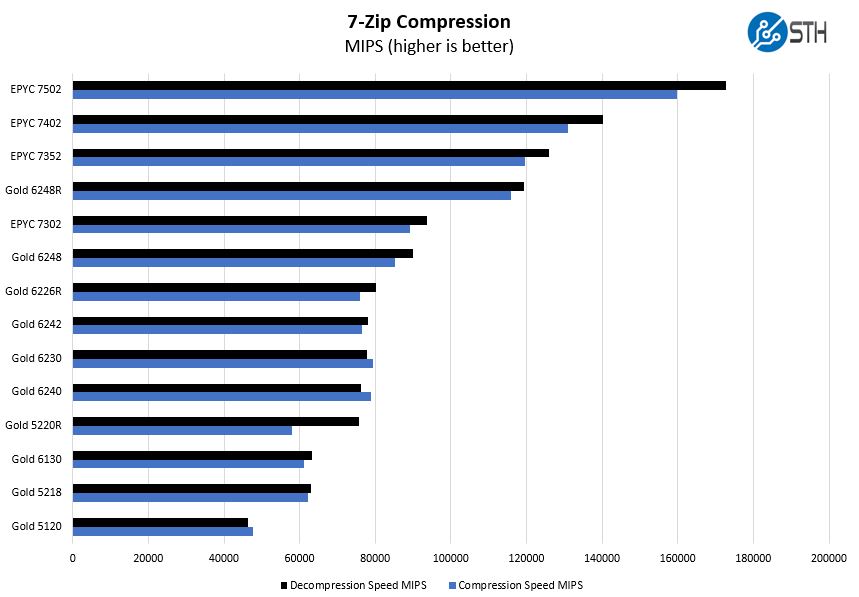
Here we wanted to point out that the Gold 6226R is slightly outperforming the Intel Xeon Gold 6240 which is a frequency optimized 18-core part at the same 150W TDP. Even looking at these parts, we see a savings of over $1000 per chip.
NAMD Performance
NAMD is a molecular modeling benchmark developed by the Theoretical and Computational Biophysics Group in the Beckman Institute for Advanced Science and Technology at the University of Illinois at Urbana-Champaign. More information on the benchmark can be found here. With GROMACS we have been working hard to support AVX-512 and AVX2 architectures. Here are the comparison results for the legacy data set:
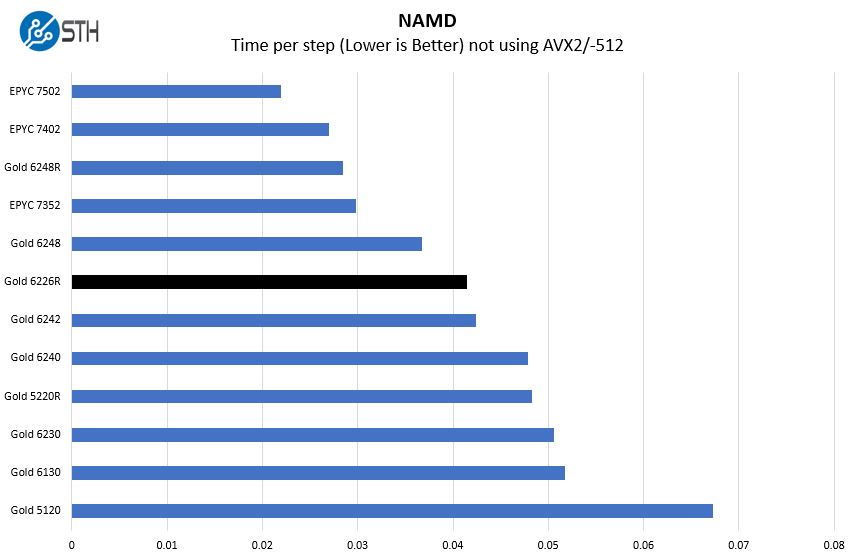
With the new refresh, some of the higher-end SKUs got a lot faster. The Intel Xeon Gold 6248R costs more, but offers great per-core performance across 24 cores. While it may seem like the Gold 6248R is more expensive on a per-core basis, there is more to consider. The Xeon Gold 6248R by having more cores per socket means one can utilize 50% more cores per system leading to lower system costs. That may actually erase much if not all of the delta from the CPU price differential.
Sysbench CPU test
Sysbench is another one of those widely used Linux benchmarks. We specifically are using the CPU test, not the OLTP test that we use for some storage testing. Here are the multi-threaded results:
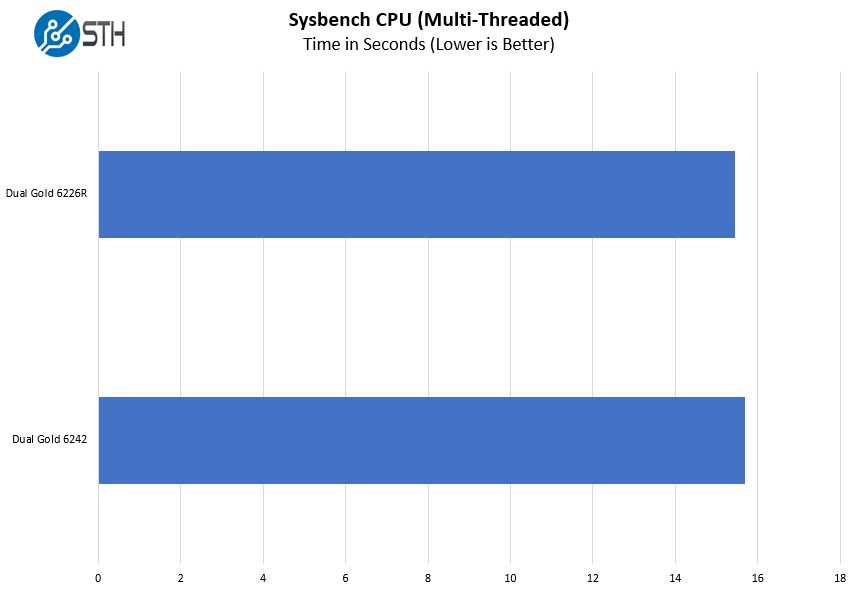
Here are single-threaded results:
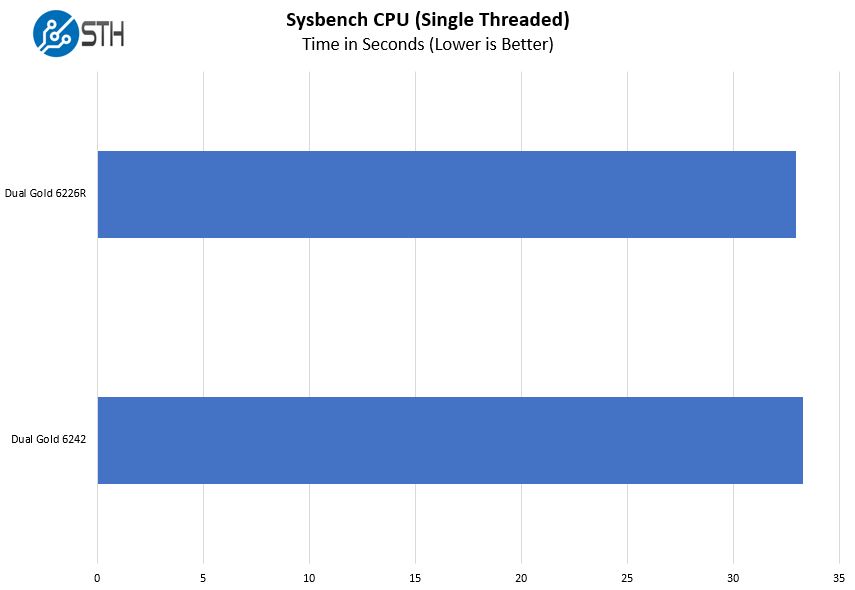
We see the Xeon Gold 6226R as the refresh successor to the Xeon Gold 6242. We reviewed the Intel Xeon Gold 6242 in a quad-socket configuration, but we also tested the chips in a dual-socket configuration. As you can see, the chips are extremely close in terms of performance but we did see slightly better performance from the Gold 6226R. We would never recommend upgrading a Gold 6242 server to a Gold 6226R because they are so close. We would, however, suggest that if you previously purchased the Xeon Gold 6242 for 16-core/ socket servers that you transition to the Xeon Gold 6226R.
OpenSSL Performance
OpenSSL is widely used to secure communications between servers. This is an important protocol in many server stacks. We first look at our sign tests:
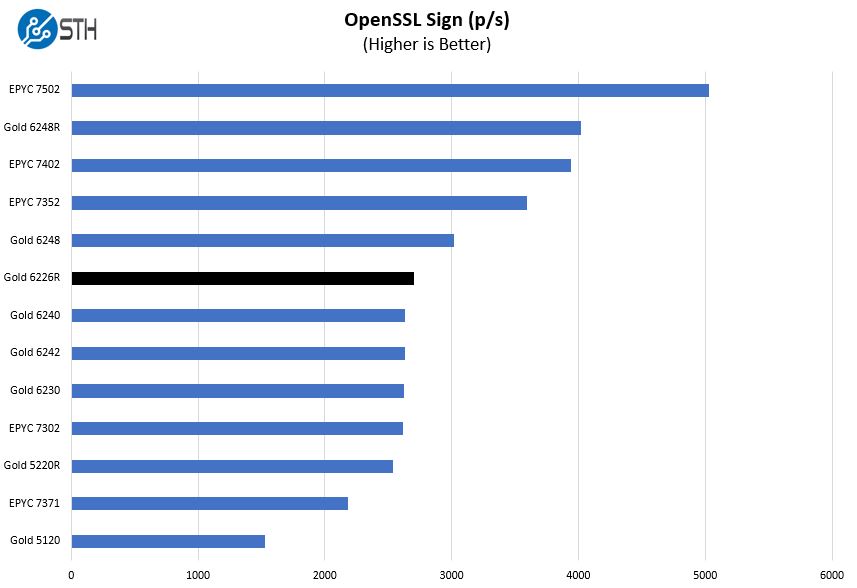
Here are the verify results:
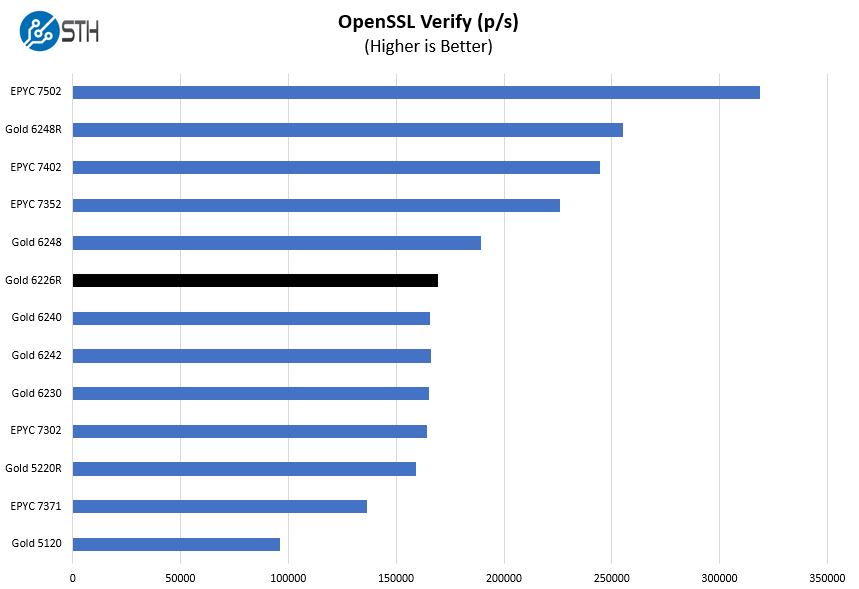
In our OpenSSL testing, we found the Gold 6226R to perform between the AMD EPYC 7302 and AMD EPYC 7352 16-core parts. Price-wise, the Gold 6226R is between those two parts as well, so we think this positioning makes sense. On many workloads that take advantage of AMD’s cache hierarchy, the EPYC chips perform better, however, we can see that when it comes to a core and clock speed race, the Xeon Gold is very competitive.
UnixBench Dhrystone 2 and Whetstone Benchmarks
Some of the longest-running tests at STH are the venerable UnixBench 5.1.3 Dhrystone 2 and Whetstone results. They are certainly aging, however, we constantly get requests for them, and many angry notes when we leave them out. UnixBench is widely used so we are including it in this data set. Here are the Dhrystone 2 results:
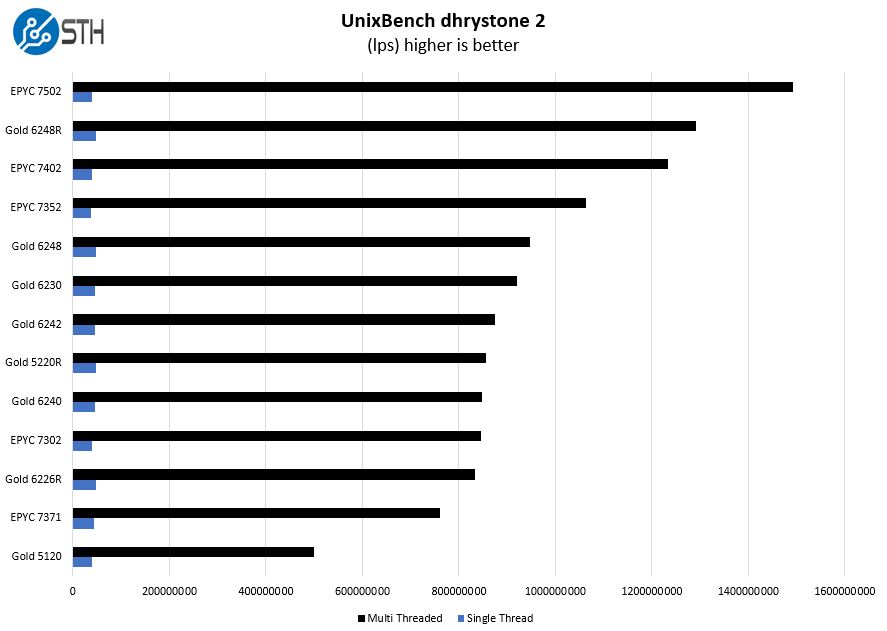
Here are the whetstone results:
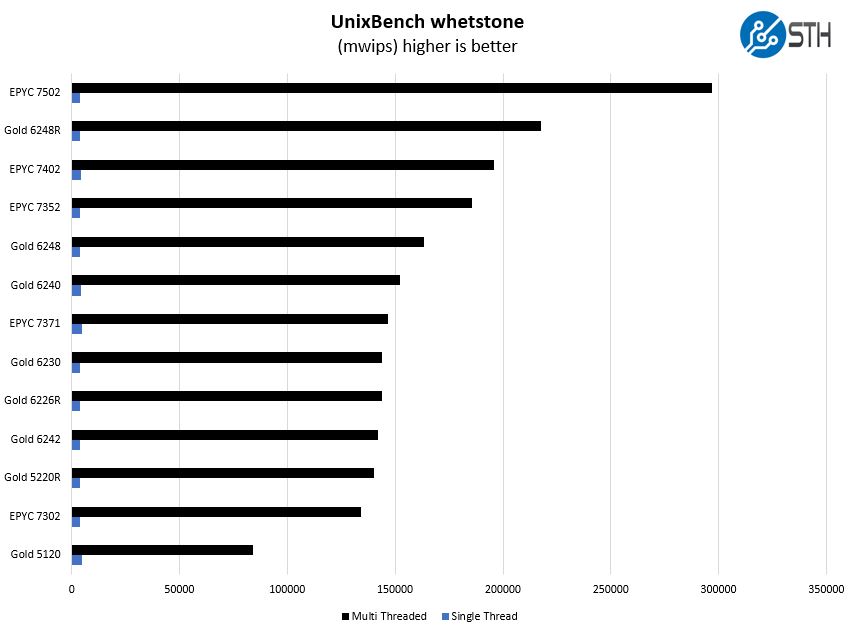
We again see a similar trend here with the Xeon Gold 6226R placing between the $1055 AMD EPYC 7302 and the $1350 EPYC 7352 parts. For a $1300 part, we would expect it is somewhere in the middle of these two options. AMD may have a performance per list price dollar lead, but it puts Intel close enough that with deal and bundling discounts Intel is about where they need to be.
GROMACS STH Medium AVX2/ AVX-512 Enabled
We have a small GROMACS molecule simulation we previewed in the first AMD EPYC 7601 Linux benchmarks piece. In Linux-Bench2 we are using our “small” case which is appropriate for single-socket servers. Our GROMACS test will use the AVX-512 and AVX2 extensions if available.
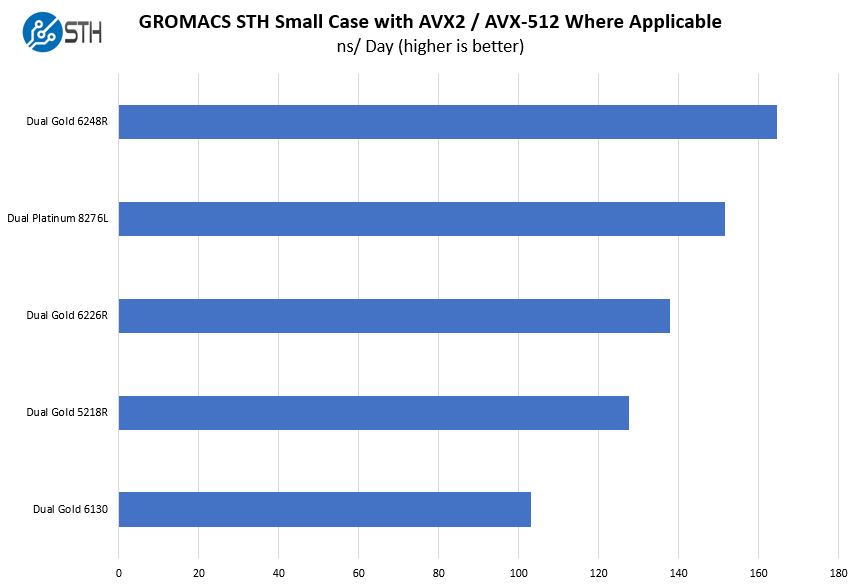
Taking a step back and looking at what AVX-512 can do for a chip, we see something that is very interesting here. We are seeing absolutely great performance with the 16-core 150W TDP part not trailing the 28-core 165W TDP Intel Xeon Platinum 8276L by as much as one may expect. TDP is one of the great performance equalizers of modern chips. It is also why in two years a 150W TDP CPU like the Xeon Gold 6226R will seem like a low-power option.
Chess Benchmarking
Chess is an interesting use case since it has almost unlimited complexity. Over the years, we have received a number of requests to bring back chess benchmarking. We have been profiling systems and now use the results in our mainstream reviews:
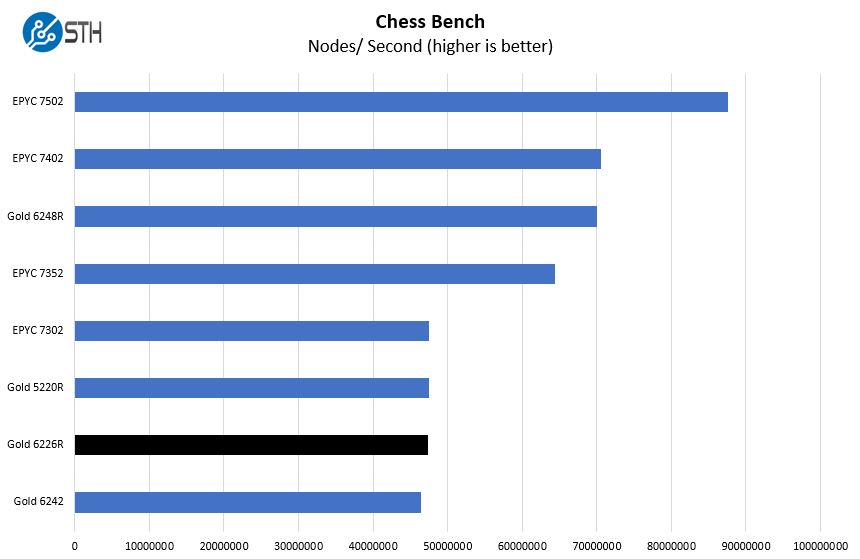
On the chess benchmark, we see a virtual dead heat between the lower-clocked but higher core count Xeon Gold 5220R again.
STH STFB KVM Virtualization Testing
One of the other workloads we wanted to share is from one of our DemoEval customers. We have permission to publish the results, but the application itself being tested is closed source. This is a KVM virtualization-based workload where our client is testing how many VMs it can have online at a given time while completing work under the target SLA. Each VM is a self-contained worker.
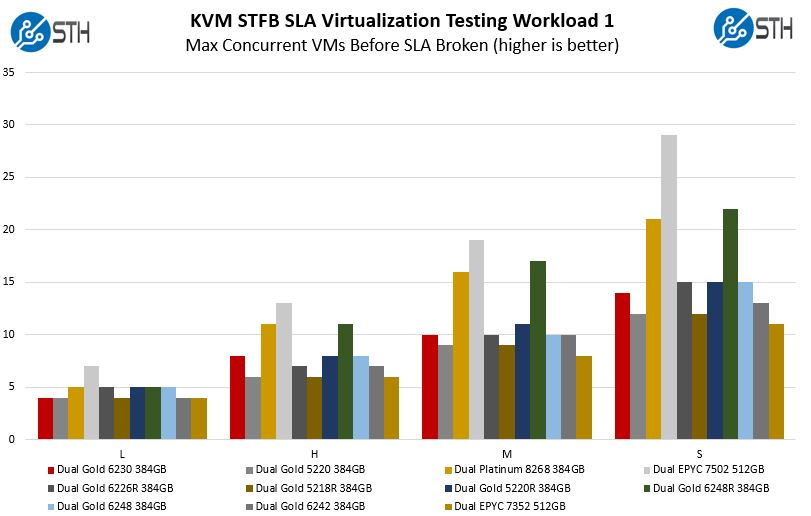
Here we tried giving some sense of what we are getting in terms of virtualization performance. We again saw performance around what we would expect from the Xeon Gold 6242 and similar to the Gold 5220R which reinforces what we saw elsewhere.
Next, we are going to discuss market positioning and impact before getting to our final words.




Thank god for AMD. I wonder how Intel’s Humble Pie tastes?
How much of that perrfomance will be left after latest security patches ?
And how long will it last until next round of patches ? Few weeks maybe ?
Great write up and review. With so many Intel SKU’s available the segment had become muddy and difficult to navigate. The 1-way SMP and 2-way SMP is very difficult to determine from the SKU, so be careful not to buy 2 1-way SMP’s thinking they will work in a 2-way motherboard…The value per core is fantastic, and stays under the per core licensing keeping TCO down in a DC. Maybe gen 3 will push the 4ghz limits on a higher TDW – here’s hoping. Just ordered one can’t wait to test this in an hyper-v role with 30 VM’s this is going to be fun, especially coming from dual X5690’s!!